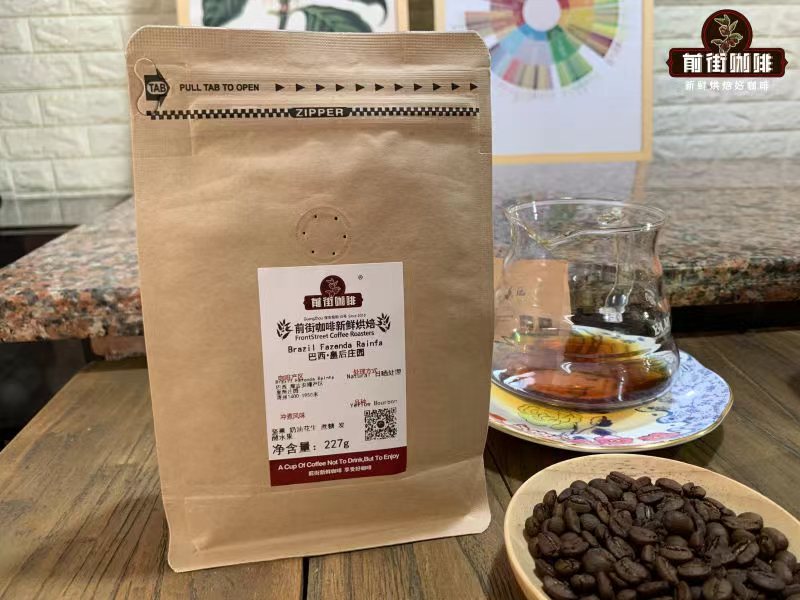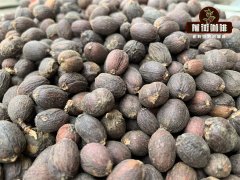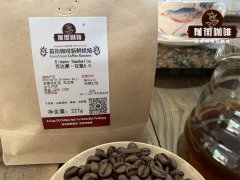Semi-washing and complete washing in Brazil Super sun-dried beans and honey-prepared beans in Brazil
In Brazil, coffee cherries during the May harvest have already emitted a rich ripe aroma and need to be picked urgently. The harvest season will last until the end of August. 35% of the fresh coffee fruit is harvested by machine, while the remaining 65% is done by hand. It is the perfect balance of machine technology and handwork that ensures the highest quality of the coffee cherries picked.
Brazil's unique climate has made it one of the world's largest coffee bean producers, and the boutique coffee industry is on the rise like a new star. Due to mild climatic conditions, coffee cherries in Colombia and Central America can be processed into raw coffee beans very limited (which is why you rarely see high-grade coffee raw beans processed by natural sun or honey treatment here). However, unlike Colombia and Central America, Brazil has near-perfect climatic conditions suitable for handling fresh coffee fruits, and coffee farmers can produce high-quality super sun beans, honey prepared beans, semi-washed beans and fully washed beans.

Located in the state of Minas Gerais, South of Brazil, Monti Allegri Farm is a family farm passed down from four generations. The farm is owned by the Vieira family and celebrated its centenary in 2017.
Monty Allegri Farm focuses on producing boutique coffee-that is, coffee beans with a quality score of more than 80 points. "
Monti Allegri Farm grows no less than 50 different types of coffee, covering many varieties that are popular in Brazil, such as New World (also known as Mondonova) and Catuai.
70% of the raw beans at Monty Allegri Farm are treated in full sun (that is, after the fruit is picked.
Start the sun-drying process without treatment.
And washed beans can be subdivided into three categories:
Half-sun treatment
After picking the coffee cherries, remove the immature fruits and foreign bodies through the sink, remove the outer skin and flesh, and insolate with the mucous membrane.
Complete washing method
After picking coffee cherries, the immature fruits and foreign bodies were removed through the sink, the outer skin and pulp were removed, and the mucous membrane was removed by wet or dry fermentation.
Semi-washing method
After picking coffee cherries, remove the immature fruit and foreign body through the sink, remove the skin and part of the pulp, and then use the pectin machine to remove the mucous membrane. The removal of mucous membrane helps to reduce the required sun drying time and reduce the risk of fermentation. This method is often used when the climatic conditions are not so ideal. If the air humidity is high, the climate is warm or there is rain, then there is a risk of mildew in the drying process. As a result, most of the washed beans used in commodity trade in Brazil are processed by semi-washing.
The use of advanced technology plays a particularly important role in the quality control of boutique coffee production. Monty Allegri Farm will carefully screen the right size coffee cherries and use electronic machines to identify the maturity of coffee cherries to ensure the optimal completion of the picking work. The traditional impression of Brazilian coffee makers is large farms. It is true that there are large coffee bean farms in Brazil, but most of them are small family farms.
According to official figures from the Brazilian government, there are about 260000 coffee manufacturers in Brazil, while 60 per cent have less than 50 hectares of farm area. Although the quality of commercial coffee beans in Brazil has improved, many farms still focus on producing trace amounts of premium coffee beans. If you compare the quality of commercial beans over the past 10 to 20 years according to the high or low grade of coffee beans, you will find that the average quality of Brazilian coffee beans is improving day by day.
Until 1990, Brazilian coffee makers were not allowed to export their products because of government controls. Only a very small number of people have the privilege of export licensing. "although many coffee farmers still aim for high yields, that doesn't mean they don't care about the quality of coffee beans. The truth is, they must care, but their focus is on achieving the average sales price in line with the market with lower production costs. Compared with boutique coffee, they have more flexibility in controlling production costs, and can independently choose nutrient content and treatment methods in the planting soil, drying equipment of different quality, and so on. However, for boutique coffee, the situation is completely different-no matter whether the selling price is high or low, the production cost is fixed. In other words, there is no flexibility.
For manufacturers, if they want to be classified as boutique coffee, they must adhere to strict standards and meet international certification requirements. As a result, some Brazilian manufacturers believe that the lack of flexibility has prompted them to give up producing higher-quality coffee beans.
Under normal circumstances, the younger generation does not want to work in the fields, not just to grow coffee beans, but the agricultural industry as a whole. For some industries, the shortage of manpower means the delay of harvest time.
For example, if you have two brothers, one working in a retail store and the other picking, you will find that the income of picking work will be 2.5 times that of retail at the end of the month.
Important Notice :
前街咖啡 FrontStreet Coffee has moved to new addredd:
FrontStreet Coffee Address: 315,Donghua East Road,GuangZhou
Tel:020 38364473
- Prev

How does the treatment affect the flavor and taste of coffee? the treatment will affect the chemical composition of coffee.
Why do sun beans taste different from water-washed beans? What makes the sweetness of honey handling coffee more obvious? The method of raw bean treatment has a great influence on the flavor, aroma and alcohol thickness of coffee, and it is also an important difference for many people to choose coffee beans. The chemical changes that occur during the processing of coffee beans and how these changes affect the flavor in the cup. We can learn about it together.
- Next

The coffee has expired for a few months. Can you still drink it? will the coffee expire? What is the factor of expiration?
All good things come to an end. Or at least one expiration date. If you keep some of your favorite coffees in your storeroom all the time, you may want to know how long they can be stored in this way. And there will be such a question, how long will the coffee last? Will the coffee go bad? Is it safe to eat once the shelf life is exceeded? How can I keep my coffee from spoiling? All
Related
- What is the meaning of lactic acid fermentation with coffee bean treatment?
- How to judge the state of foam by sound?
- How does the latte pull out the unicorn pattern? Come to get for a little trick to improve the flower pull!
- Will flower pulling affect the taste of the latte?
- Do you know the history of coffee?
- The difference between honey treatment and sun washing what is raisin honey treatment?
- What kind of milk can a novice use to make coffee foam to keep the foam longer? The correct method and skills of milking tutorial sharing
- Why do washed coffee beans taste sour? Flavor characteristics of washed Coffee
- Introduction to the skill of how to practice the size and height of water injection around the circle of hand-brewed coffee
- How do beginners practice coffee flower drawing from scratch?

